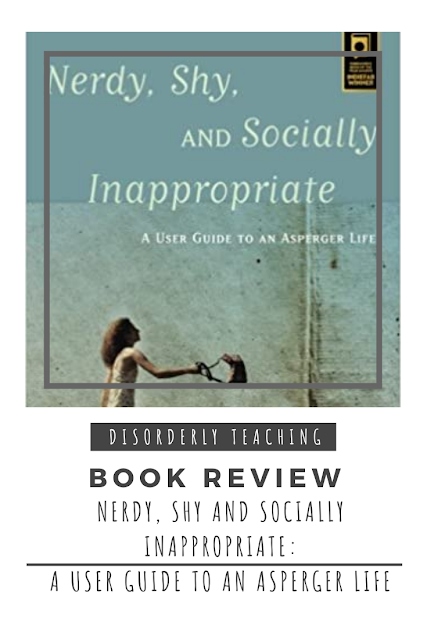Below is a review of this great book, and implications for teachers.
The book is broken down into separate chapters, each focusing on different aspects of living with ASD, beginning with a chapter about growing up undiagnosed. In this chapter, Kim describes a childhood in which she preferred to play alone, even playing games of Risk and Monopoly against herself. She collected coins, stamps, and baseball cards, and preferred organizing her Barbies over playing with them. She goes on to explain how she was bullied as a child because she struggled to navigate social interactions, and eventually became a bully herself.
The chapter titled ‘Rigid and Routine’ provides insight into these traits of individuals with autism. Kim explains that her own “strong reliance on rules, routines, and pattern recognition” (p.86) was developed as a coping strategy for dealing with some of the challenges of autism. They helped her feel like she had some semblance of control and stability when so much of her daily life was confusing. Understanding this, teachers should utilize clear routines and expectations in their classrooms to provide this stability to their students with ASD. Visual schedules, regularly repeated routines, and designated centers or zones in the classroom can all help in this regard.
There are two interesting chapters that cover sensory seeking, sensitivities, and the autistic body. For Kim, stimming often comes as a result of having to keep her body still when it is socially expected of her, so teachers should be aware of this and allow students to stim, if appropriate, or provide other means of movement for students such as exercise ball seats, standing desks, or rocking chairs. Often teachers fall into the habit of keeping students seated and still, even when it is not developmentally appropriate, and we need to break away from that.
Kim also explains that stimming serves a regulatory function, providing stimulation or a calming effect, depending on the situation, and that the form, and intensity of stimming can be very varied. Reading through this chapter, teachers may learn about forms of stimming they may have never considered before. Educators working directly to modify the behavior of students with ASD may also benefit from reading about how Kim’s stimming has evolved to be more discrete – a technique that may be beneficial for students who wish to maintain the functions of stimming without standing out too much from their peers.
In her chapter on emotions, Kim explains that she has trouble identifying and verbalizing emotions, an issue common for those with ASD. After further analysis, she realized that she had difficulties in three areas: modulation, identification, and discrimination. She dives deeper into all three areas, providing a wonderful insight into an area that is often very difficult for people with autism to explain. She also describes a strategy she uses called “Sketching My Emotional Constellations” to help identify and understand what different emotions mean and look like to her. This kind of activity could work very well in a clinical or education setting to help students better understand their own “emotional constellations.” It can also be helpful to demonstrate the depth of emotions. Kim explains that the word ‘happy’ is a “blurry splotch of a feeling” (p. 144) to her and she needed to explore it further, arriving at personal definitions or images for words such as ‘content’, ‘elated’, ‘peace’, ‘wonder’, ‘joy’, and ‘bliss.’
The chapter on executive function is also highly informative. Not only does she discuss what executive functioning is, but she provides clear examples of how this plays out in everyday life, such as when she visited New York City and could not answer the question “What do you want to do?” In this section in particular, Kim takes time to provide specific strategies those with ASD can use to cope with poor executive functioning, such as use of routines, reminder apps, and chunking of tasks. She also does an amazing job of explaining what goes on in her mind during what others would perceive to be “processing delays.” Any educator would do well to read this to better understand just how much our students are thinking when we often assume they’re simply not.
Peppered throughout the book are discussions about the manifestation of ASD in girls, and their perceived under-identification. Kim points out that, after her initial diagnosis she was surprised that no one had realized she had ASD as a child. She later reflects that as a child, she was a good girl who follow the rules and, as a result, she was left to her own devices. Any odd behaviors were chalked up to her being shy, nerdy, or quirky, and overlooked. She also points out that both Kanner and Asperger primarily studied boys when defining the traits of autism and Asperger’s respectively, so the signs we tend to look for skew towards the identification of males with autism. Both educators and clinicians need to be aware of these factors which may be causing us to under-identify girls with ASD, and make an active effort to look for perhaps more subtle signs in female students and clients.
There are further chapters in Kim’s book, covering topics such as meltdowns, romantic relationships, parenting, navigating social situations, and redefining and accepting herself post-diagnosis. All of it is incredibly insightful and well worth the read to gain a greater understanding of those with autism, and the challenges they face both in school and beyond as they reach adulthood.


No comments:
Post a Comment